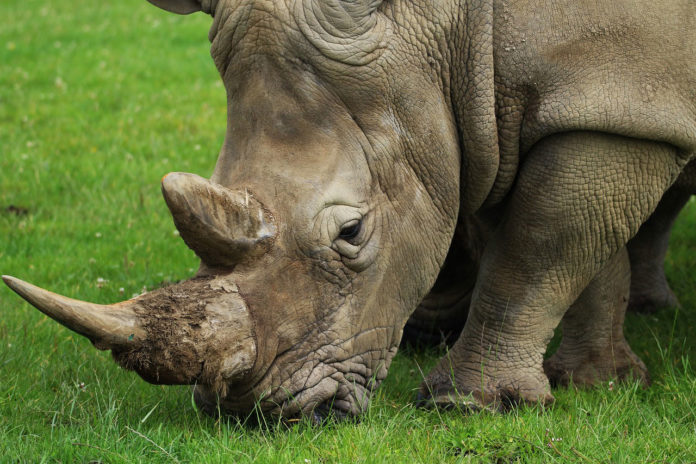Rhino survival is critically challenged by the trade-in horn. Demand for rhino horn is driving poaching with devastating effect for the few individuals left.
Scientists from the University of Oxford, in collaboration with Fudan University, Shanghai, have found a new way to save the endangered rhino. They have invented a new way to create fake rhino horns using horsehair.
Through this study, scientists aim to confuse and thus hopefully diminish the demand for real rhino horns by showing a way to a vastly cheaper copy that can be used to infiltrate the market. The horn of the rhinoceros (Rhinocerotidae) is not a horn in the traditional sense, like the horn of a cow or the nail of a hoof. In real, the rhino’s horn is a tuft of hair growing, tightly packed, and glued together by exudates from the sebaceous glands on the nose of the animal.
To create a fake rhino’s horn, scientists bundled together tail hairs of the rhino’s ubiquitous near relative, the horse, to be glued together with a bespoke matrix of regenerated silk mimicking the collagenous component of the real horn.
Using the approach, scientists fabricated sample structures that were confusingly similar to real rhino horns in look, feel, and properties. Analytical studies demonstrated similarities in composition and properties with natural and faux horns.
The authors of the study believe that it is essential that plausible copies should be simple to produce while being very similar in both structure and chemical composition.
The tail hairs from horses, glued together with a silk-based filler, seem to fulfill this condition.
The noted, “Significantly, this bio-composite is easily molded into a rhino horn copy with a microstructure that, when cut and polished, is remarkably similar to that of the real horn.”
Professor Fritz Vollrath, from the University of Oxford’s Department of Zoology, said, “It appears from our investigation that it is rather easy as well as cheap to make a bio-inspired hornlike material that mimics the rhino’s extravagantly expensive tuft of nose hair. We leave it to others to develop this technology further to confuse the trade, depress prices, and thus support rhino conservation.”
Co-author Ruixin Mi, from the Department of Macromolecular Science, Fudan University, said: “Our study demonstrates that materials science can contribute to fundamental issues in biology and conservation. The fundamental structure of the rhino horn is a highly evolved and tough fiber-reinforced bio-composite, and we hope that our attempts to copy it will not only undermine the trade in rhino horn but might also find uses as a novel bio-inspired material.”
The study, published in Scientific Reports, is expected to provide a blueprint to create convincing fakes that could eventually flood a market that has decimated the wild rhino population.
